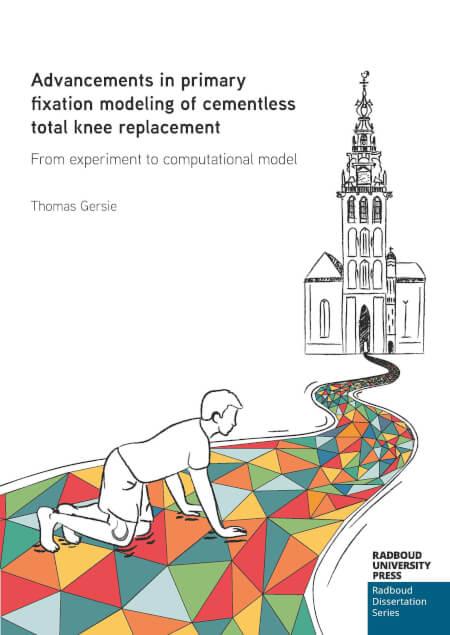Advancements in primary fixation modeling of cementless total knee replacement: From experiment to computational model
Keywords:
Implant fixation, Cementless total knee arthroplasty, Finite element analysis, Trabecular bone, Viscoelasticity, Bone abrasionSynopsis
This thesis focused on improving the accuracy of finite element (FE) models for uncemented total knee arthroplasty by integrating bone viscoelasticity and bone abrasion. By incorporating the time-dependent behavior of bone and the wear that occurs during implantation, simulations can more realistically predict the initial fixation of an implant. To achieve this, a material model was first developed to describe the viscoelastic behavior of trabecular bone, as well as a method to model virtual abrasion within FE simulations—an approach not previously applied. The results showed that while viscoelasticity affects bone stresses, it has only a limited impact on fixation strength. In contrast, bone abrasion proved to be essential for realistically predicting both fixation forces and micromotions between the bone and implant. Validation with experimental data emphasized the importance of including both factors. The insights from this research may contribute to improved implant design and optimized surgical techniques. In addition, the integration of AI could further enhance the computational speed of FE models in the future, supporting their clinical applicability.

Published
Series
Categories
License

This work is licensed under a Creative Commons Attribution-NonCommercial-NoDerivatives 4.0 International License.

